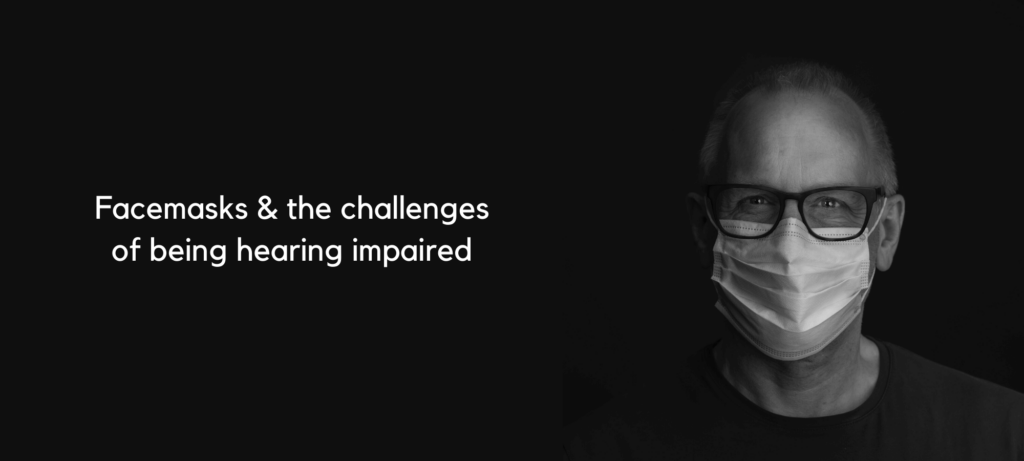Restrictions and adjustments due to the COVID-19 pandemic are presenting challenges to everyone. But for those with hearing loss, those challenges include the ability to communicate effectively due to wearing masks or face coverings. That poses problems for about 60 million Americans who live with hearing loss, ranging from mild to severe, including deafness in one or both ears.
The human brain is designed to use visual cues, including a view of lips moving, to help understand speech. Mask wearing, however, takes away these cues. The fact that we’ve been asked to keep a distance of six feet from each other to avoid spreading Coronavirus compounds the problem. As distance increases, sound levels decrease, and moving farther away makes it more difficult to focus attention on comprehending speech. Oh, and facemasks naturally muffle speech.
Placing a mask over a hearing aid or cochlear implant – not to mention eyeglasses – can also be uncomfortable. It causes people to remove hearing devices or even force them to dislodge and sustain damage.
How to Make Wearing a Mask with Hearing Aids More Comfortable
Consider the following strategies to reduce discomfort while wearing a mask.
- Wear a mask with soft fabric ties – instead of elastic – to relieve pressure on ears.
- Use a mask extender with buttons or other holders to attach the mask loops onto, on the back of the head, instead of the ears.
- Use tools like plastic “s” hooks to loop the mask onto, instead of ears.
Strategies for People with Hearing Loss to Increase Effective Communication While Wearing Masks
People with hearing loss need to keep in mind that communicating is a two-way street. You must think about more effective ways to communicate while wearing a mask and about strategies that will help people better communicate with you. This can range from understanding a cashier at the grocery checkout to comprehending what a health care provider is telling you or a loved one.
- Wear masks with clear plastic areas around the mouth for easier lip reading.
- Maintain eye contact.
- Speak slowly and clearly.
- Make clear the method you prefer to communicate; be it lip reading or even via written means
- Be sure to ask those you are speaking with to:
- Use greater enunciation.
- Avoid shouting as this can be painful to those with hearing loss.
- Rephrase remarks that are not understood.
- Do not talk while walking (especially from behind).
When speaking with a health care provider, especially when you or a loved one seeks advice or precise information about conditions, clear communication is tops when advocating for your health. You can:
- Ask to speak in a room where noise levels are low.
- Bring or ask if the provider can use a portable hearing aid amplifier.
- Ask the provider to repeat back what you’ve said to confirm your questions are being understood.
Sources:
A tricky combination: Face masks, hearing loss and hearing aids by Healthy Hearing
Masks and distancing make it tough for the hard-of-hearing, but here’s how to help the Conversation
Prevalence of Hearing Loss by Severity in the United States by the American Journal of Public health




